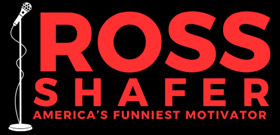How to Craft a Powerful 30-Second Elevator Pitch (With a Proven Formula)
Whether you’re in an actual elevator, introducing yourself at a networking event, giving a virtual presentation, or hopping onto a quick Zoom call, a clear and compelling elevator pitch is one of the most powerful communication tools you can master. In these fast-paced times, attention spans are short and first impressions are formed instantly. You often have just a few seconds to make a memorable impact, and your pitch is your best chance to do that with confidence and clarity.
A strong elevator pitch allows you to quickly communicate who you are, what you do, and—most importantly—how you create value for others. It helps you establish credibility, spark curiosity, and open the door to deeper conversations that can lead to job opportunities, partnerships, or new clients. Whether you’re speaking to a potential employer, investor, or collaborator, a well-practiced pitch ensures you’re never caught off guard and always ready to present yourself with purpose.
What Is an Elevator Pitch?
A 30-second elevator pitch is a concise, engaging explanation of what you do, why it matters, and how you solve a problem. The term was coined when skyscrapers made it possible to pitch someone during a short elevator ride—usually 30 seconds or less.
It’s still one of the most important tools in your business or career toolkit.
Why Most Elevator Pitches Fail
Let’s be honest. Most elevator pitches fail because they’re boring, vague, or filled with corporate jargon. If you say, “I’m a senior solutions specialist in operational systems support,” you’ve likely lost your listener by word four.
The truth is, job titles don’t sell. Solutions do.
You have to make your pitch about them, not just about you. You’re not trying to impress people with your resume—you’re trying to make them curious enough to ask, “Tell me more.”
The 3-Part Elevator Pitch Formula That Works
Here’s the formula I’ve used for years, and it works whether you’re trying to land a client, secure a job, or explain your business at a dinner party:
-
Start with the problem.
-
Explain how you solve that problem.
-
Connect your solution to their world.
Here’s a real example:
-
Step 1 – The Problem:
“You’ve probably seen pro football players get knocked out during a game. Then, trainers rush out and carry the player off the field.” -
Step 2 – The Solution:
“My company administers a six-step Concussion Protocol—on the sideline and in the locker room—to assess trauma and cognitive function. We determine if a player can safely return to the game or if it’s time to begin recovery.” -
Step 3 – The Relevance:
“We now provide that same rapid injury analysis for workplace injuries. We help businesses reduce downtime and lower healthcare costs.”
That’s infinitely better than, “I work in medical testing,” right?
Tips to Make Your Elevator Pitch Stand Out
Here are a few additional tips to make your 30-second pitch more impactful:
-
Use real-world examples. People remember stories, not stats.
-
Make it conversational. You’re not delivering a monologue—you’re starting a dialogue.
-
Be clear and jargon-free. Simplicity sells.
-
Practice until it’s natural. You don’t want it to sound rehearsed, but you do want it to be polished.
💡 Pro Tip: This same technique works on escalators, in coffee shops, on planes, and in DMs. Wherever you meet people, your pitch goes with you.
Your Elevator Pitch Could Open Big Doors
Think of your pitch as a door opener—not a sales pitch. When done well, it invites questions, builds curiosity, and leaves people thinking, “I need to talk to this person again.”
So don’t wing it. Write it down. Practice it. Refine it. And above all, make it about how you add value.
🎥 Click above to watch the full video and learn how to master your 30-second elevator pitch today.

